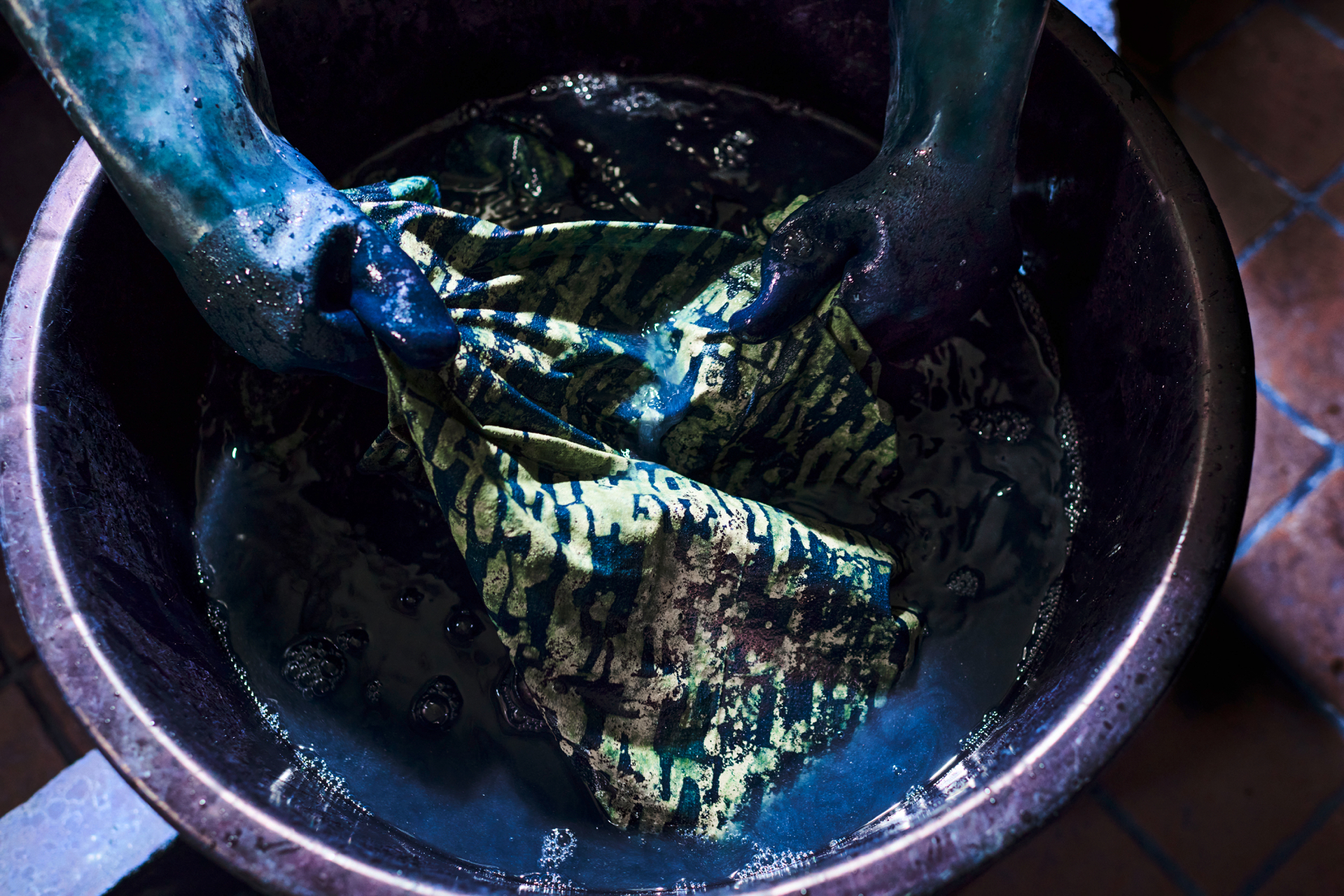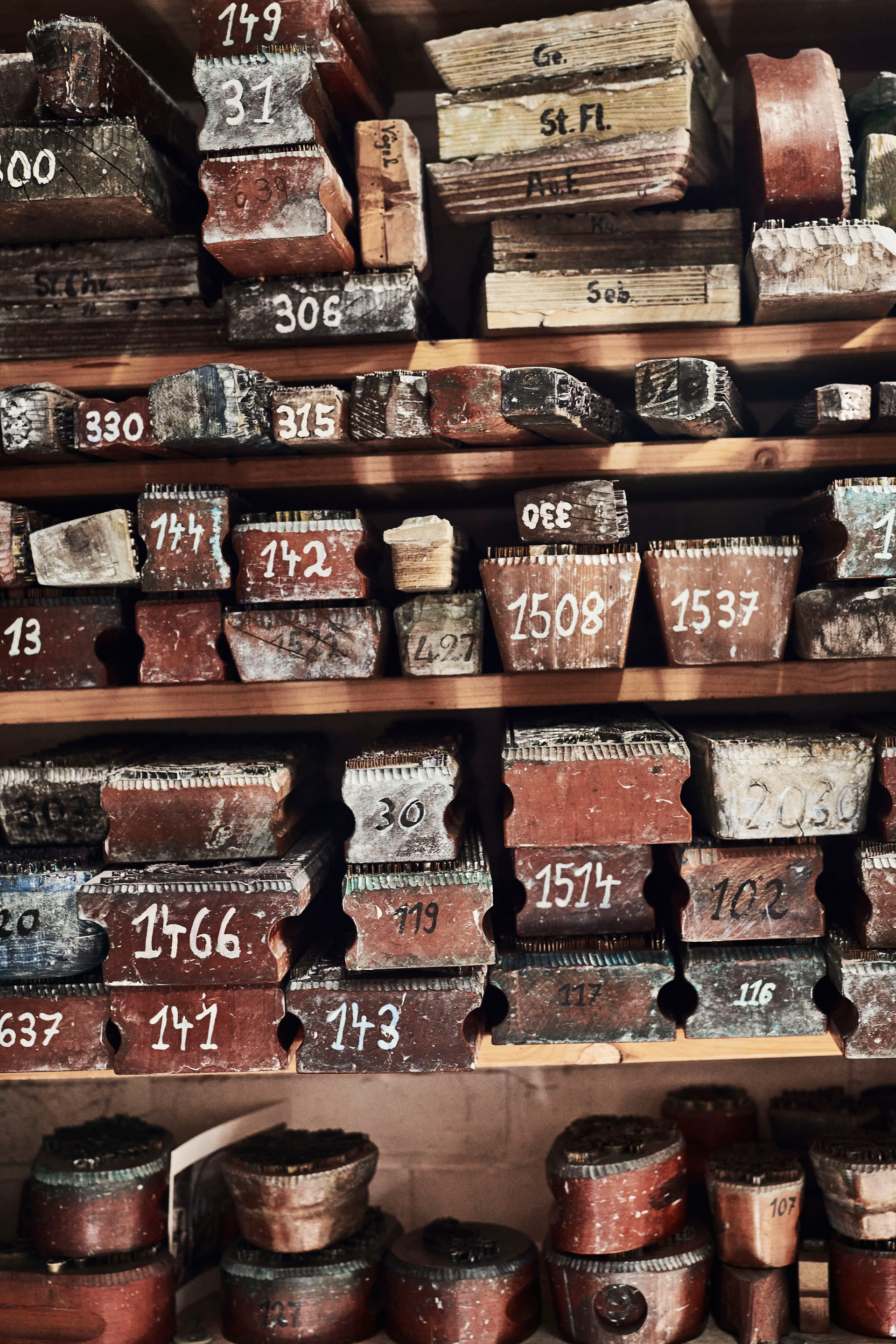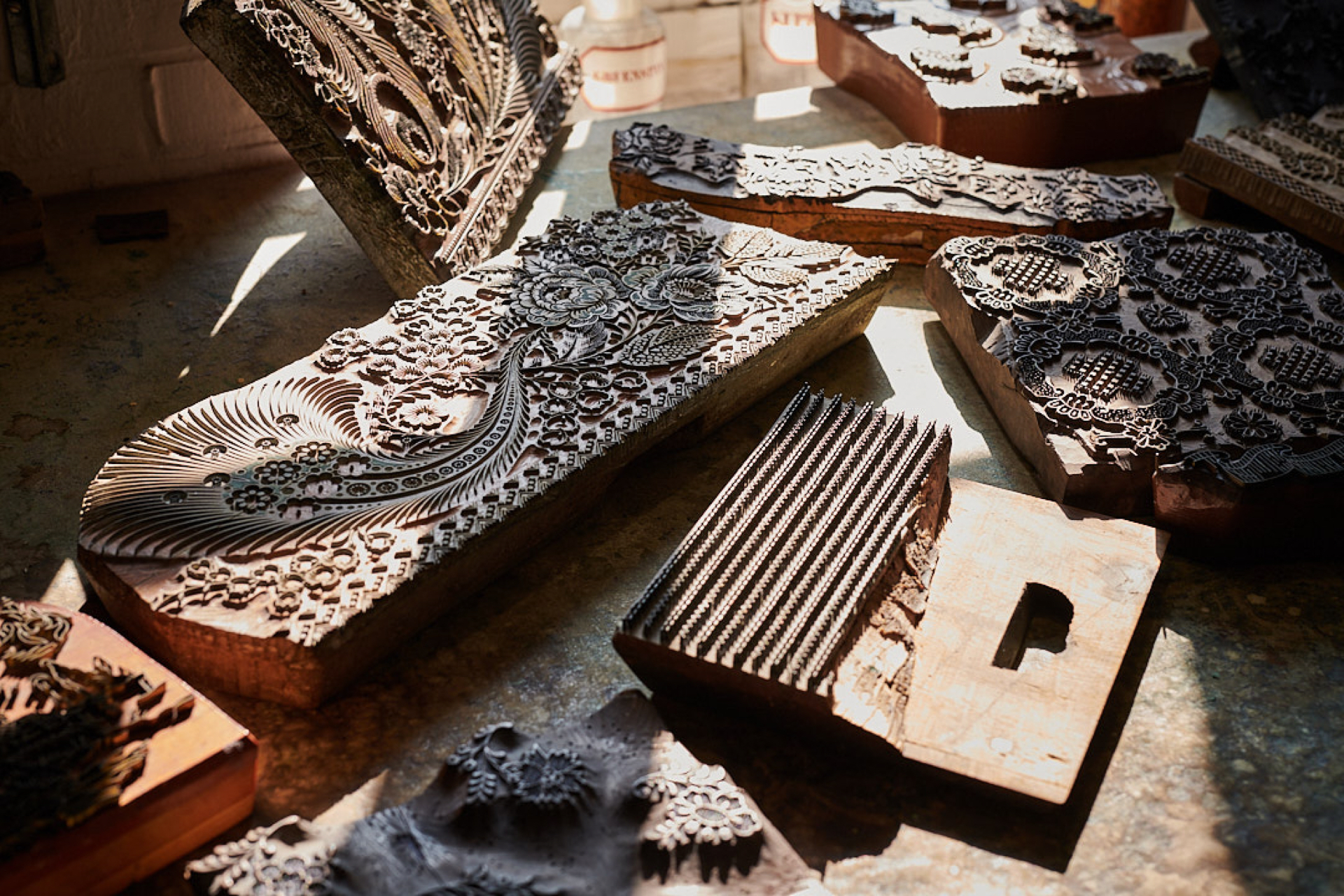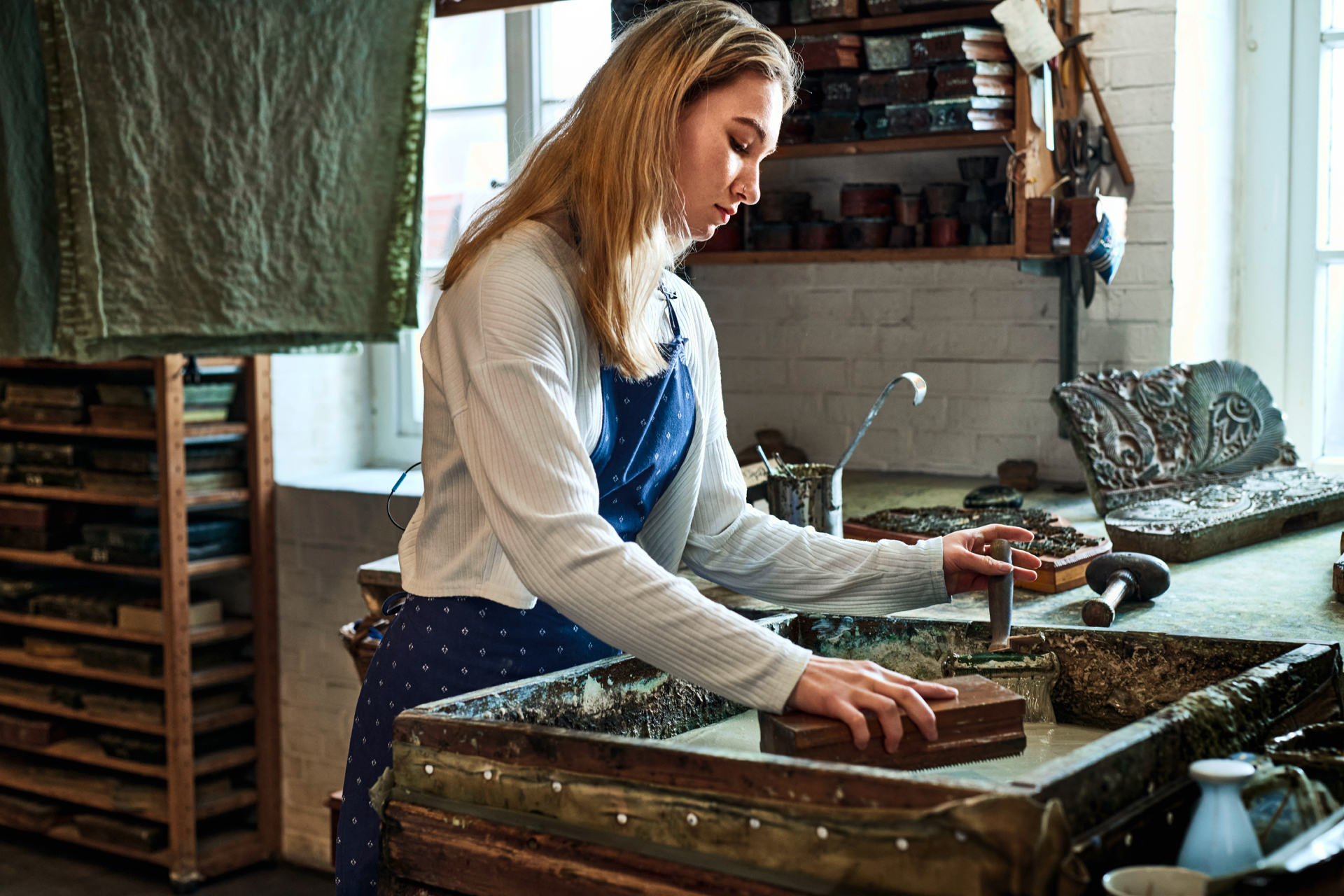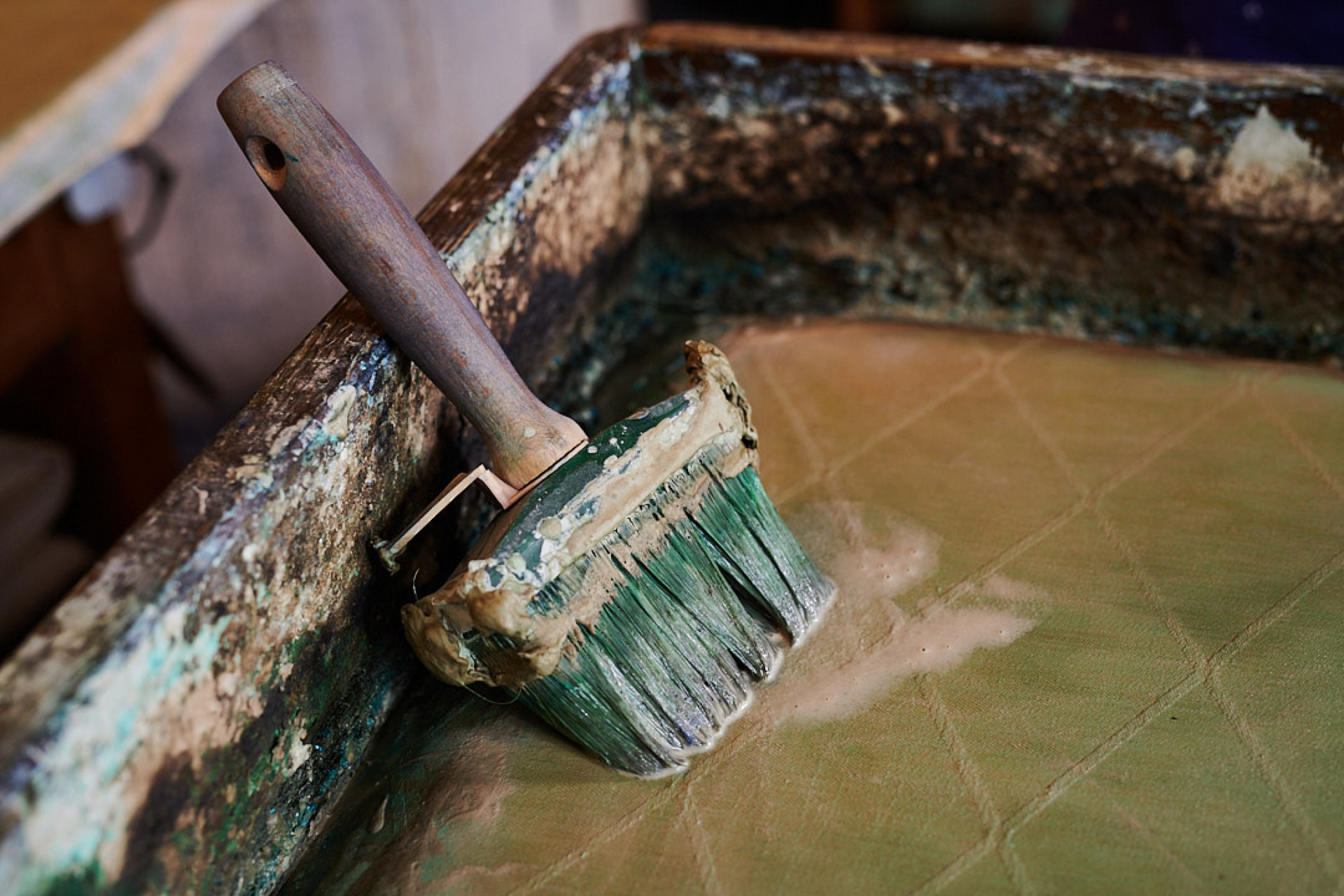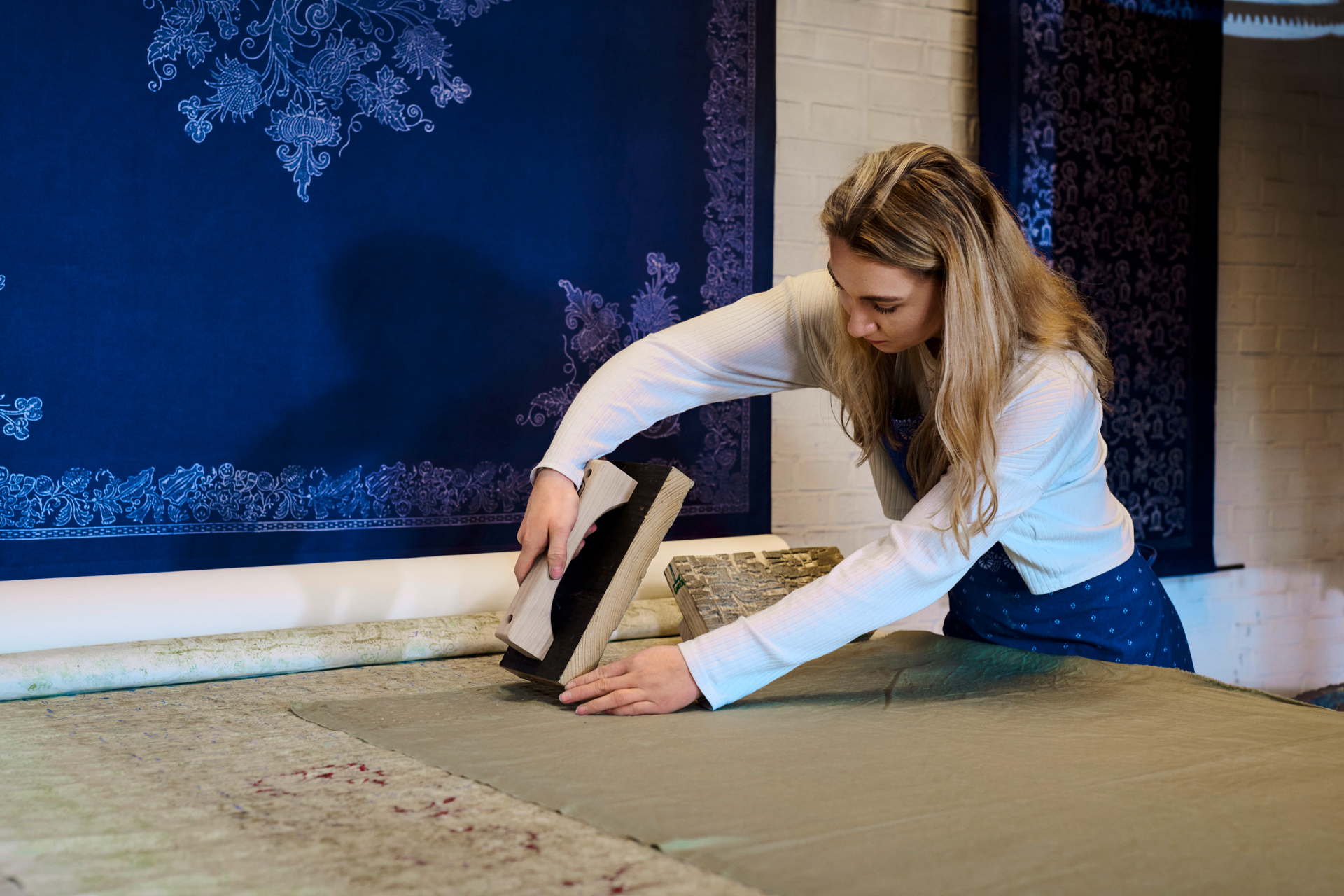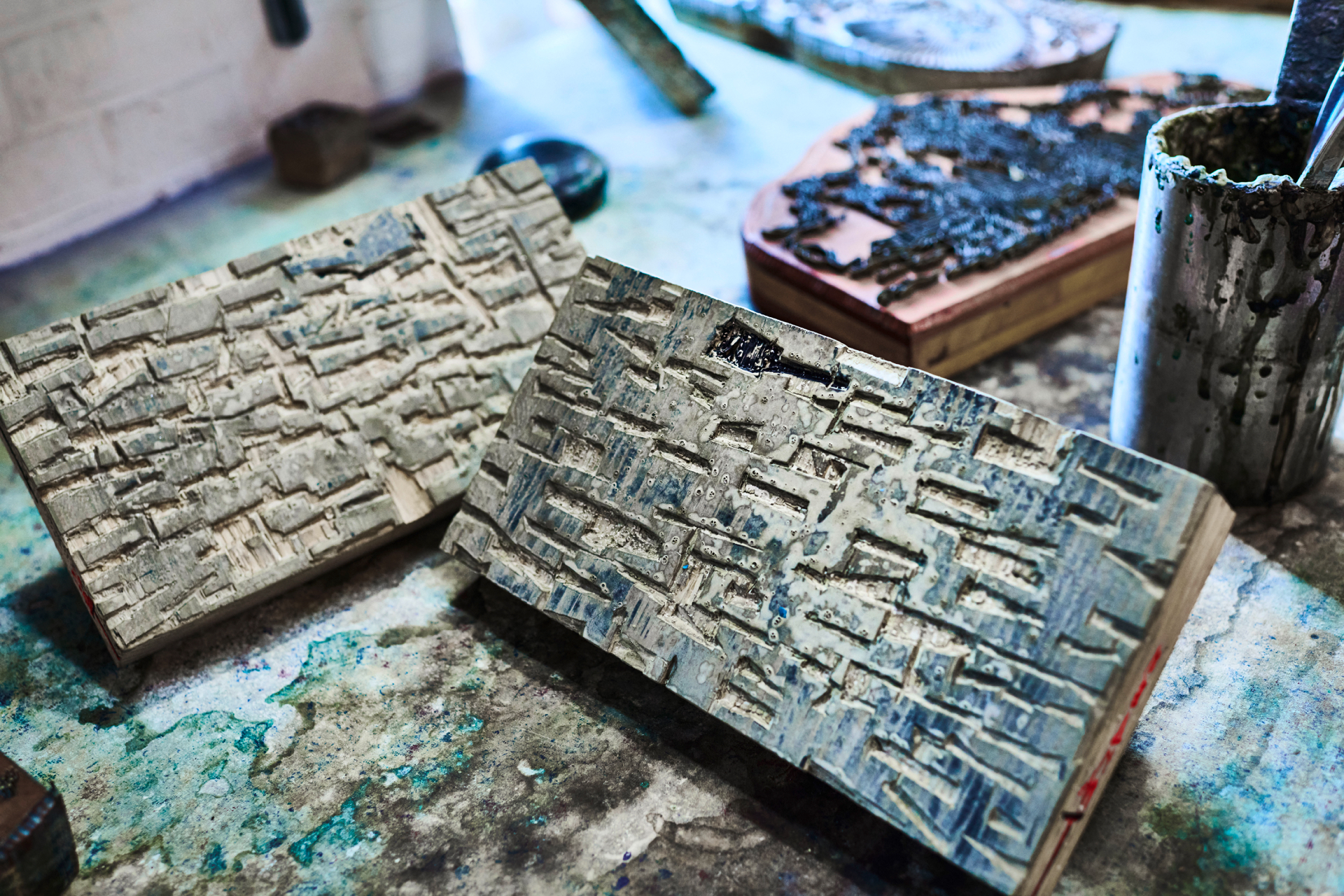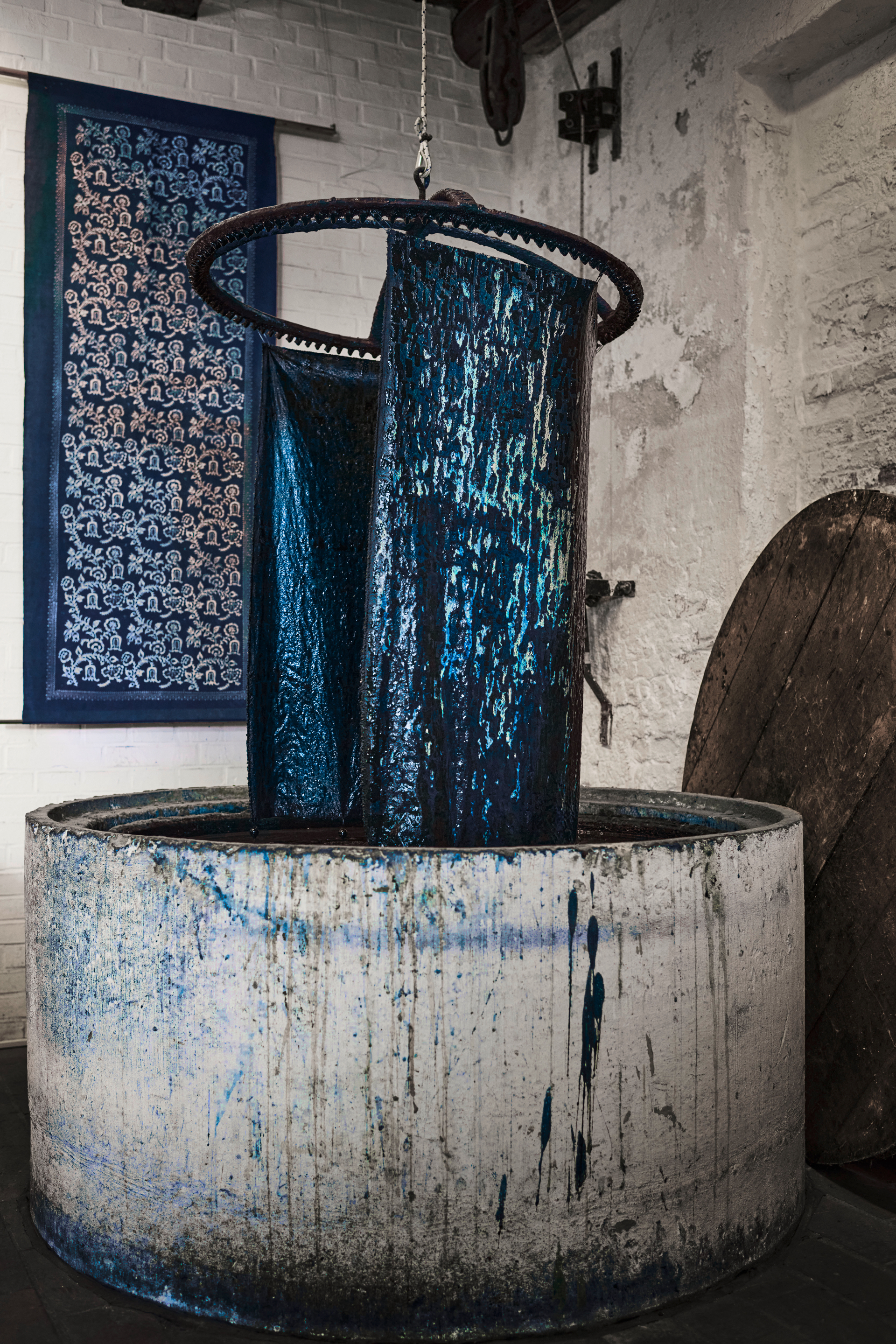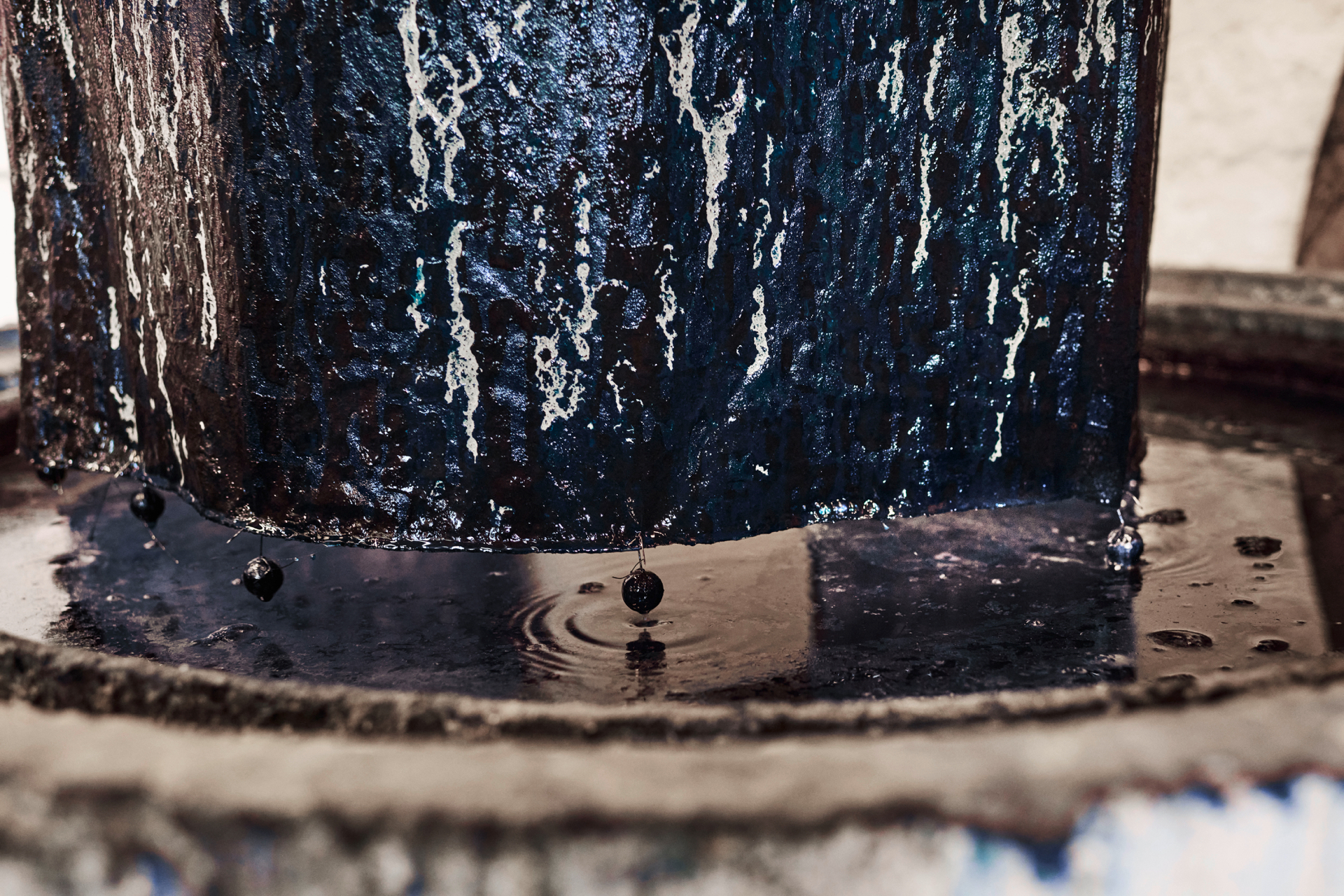The traditional technique of printing and dyeing textiles with indigo has been practised in Europe for over four hundred years and continues today. This method of embellishing cloth is done on natural fabrics such as cotton, linen and silk. Historically, the process of indigo dyeing began by extracting colour from a species of plant called woad (Isatis tinctoria), grown in Germany’s Thuringia region. It was in wide use throughout Europe until the medieval period, when various European East India companies began expanding their trade with Southeast Asia. From the seventeenth century onwards, Dutch merchants began to import indigo (Indigofera tinctoria) from India. It was preferred for its intensity of hue and hence gradually replaced the older method of extracting the dye from the woad plant. With the introduction of mechanization and bulk production in today’s market, synthetically produced indigo (indanthren blue) is increasingly used in place of natural dyes. This shift has taken place in most parts of the world; although some craftspeople still prefer to create vibrant printed textiles using conventional dyes and the labour-intensive processes associated with them.
Today a handful of active workshops in Germany preserve the indigo craft, which is known locally as as Blaudruck (blue printing). One such establishment operates out of an old warehouse in Jever, a renowned traditional centre in Lower Saxony. Blaudruckerei Jever is headed by Georg Stark, one of Germany’s few remaining traditional indigo printers and dyers, and his successor Sabrina Schuhmacher. Their practice focuses on long-established East Frisian and North German indigo dyeing techniques. They use a method known as reserve printing on such materials as cotton, linen, hemp, velvet and silk. Blaudruckerei Jever’s wide repertoire of historical designs consists of around 1,100 printing blocks. Among these patterns are five hundred vintage designs ranging from the years 1660 to the 1920s. These include Asian motifs such as pomegranates and peacock feathers, Christian themes, numerous floral patterns, delicate floral pattern stripes, and designs from the Art Deco period.
For the project featured here, made/in collaborated with Matthias Mansen, a Berlin-based artist who works with woodcut, to develop a new printing block with abstract motifs. This is the first time that Stark and Schuhmacher worked with a printing block specially designed to demonstrate the precise, individual stages of the reserve print process. Blaudruckerei Jever mainly works with centuries-old, historical blocks, which Stark has collected assiduously over the past thirty years.
In the technique of reserve printing, practised predominantly in Europe, practitioners use hand-crafted wooden and metal blocks to apply the designs onto the fabric. Large pattern blocks are traditionally made of wood from the pear tree. For intricate designs, blocks are preferred that are set in fine metal pins or stripes. Printing blocks were conventionally made by mould makers, although this specialized craft is also slowly declining. With the onset of industrialization, mechanized roller printing came into wide use, replacing traditional craft practices. Today in Germany, only twelve Blaudruck workshops continue to print textiles through age-old craft processes. Indeed, the art form has become so rare that the European indigo dyeing process was officially included on UNESCO’s list of Intangible Cultural Heritage (ICH) in 2018. This has brought greater visibility to the art form.
In creating a block-printed textile using the reserve printing method, the selected fabric is first stretched flat across a large printing table. The printers then coat the wooden blocks with a dye-rejecting paste that causes the applied design to remain white after the dyeing process. Every indigo dyeing workshop has its own recipe for the dye-rejecting paste known locally as Papp. Each workshop’s guidelines for how the ingredients are mixed and in what proportions are well-kept secrets. Conventionally gum arabic, extracted from acacia trees, is mixed with other key ingredients to give the dye-rejecting paste its unique consistency. This is vital for it to stick first to the block and then to the fabric. The dye-rejecting paste is spread on a large ink pad, and the printing block is then firmly pressed into it so that it can absorb the paste that is then used to print the fabric. It is crucial that the printing paste sticks to the fabric so that it does not come off later during the dyeing process.
In addition to the dye-rejecting paste, every “blue printer” also has its own recipe for preparing the dyeing bath, called Küpe. This is the core step that yields the intense shade of indigo. The finished printed fabric is dried for days, or even weeks, depending on the amount of dye-rejecting paste on the fabric. Then it is dyed with natural indigo or synthetically produced indanthren dye that has been prepared in a vat. For this part of the dyeing process, the textile is hung on a metal dyeing frame and placed evenly, leaving some space between the different lengths of fabric, which prevents them from sticking to each other. The textile is also weighed down with small metal weights, allowing the fabric to be evenly immersed in the dye bath.
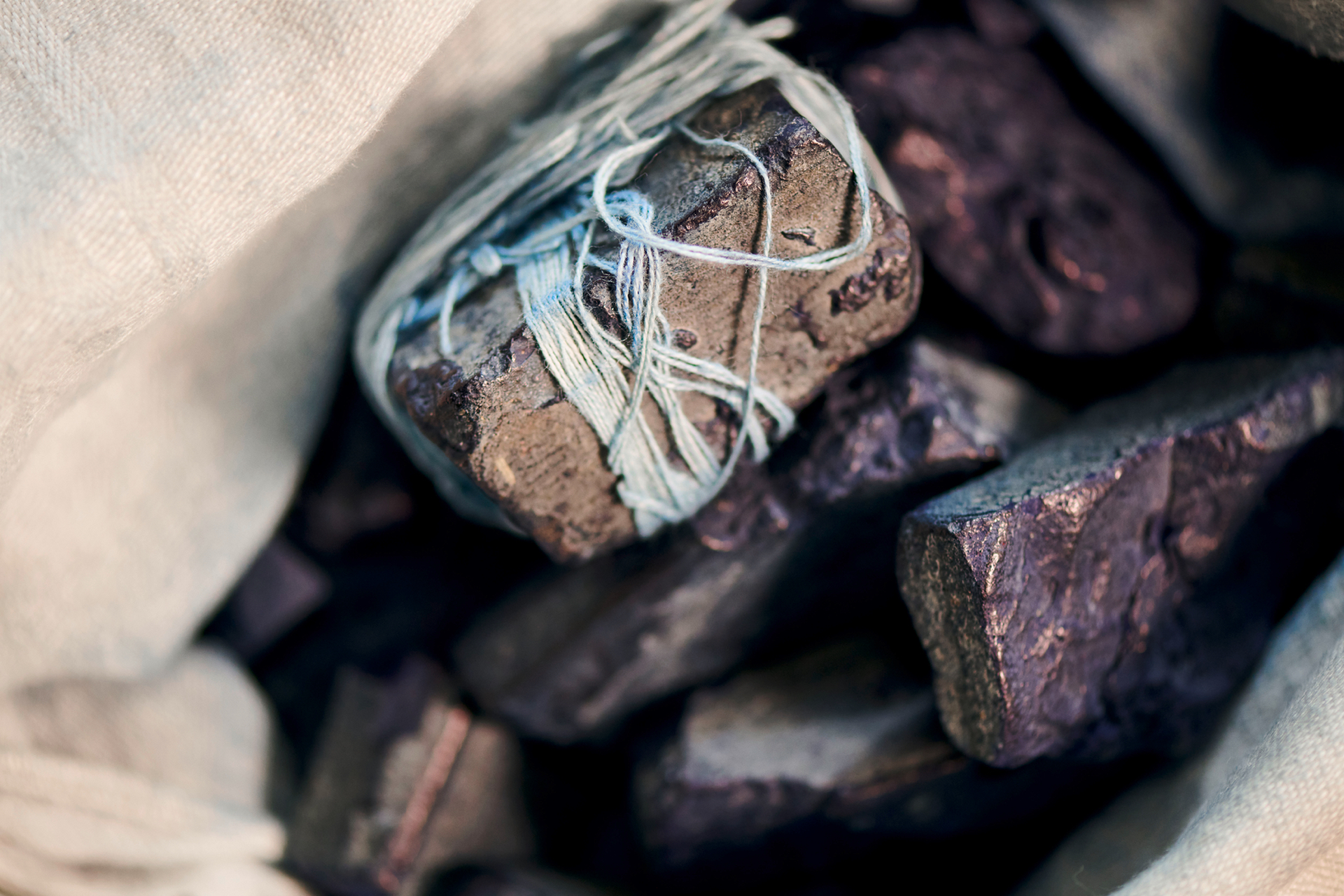
At this stage, when the fabric is dyed in natural indigo, a complete transformation takes place that is described in German as “das Blaue Wunder” (the blue miracle). When the cloth is immersed in the vat and pulled out repeatedly, natural indigo reacts with the oxygen in the air, causing the fabric to change colour from yellow to green, and finally, to blue. Dyeing fabrics with natural indigo requires several immersions in the dyeing bath. For a light blue shade, the dyeing process is not as time-consuming as it is for a darker blue. The cloth is dried between each dip, which allows the dye to penetrate well into the fibres. The whole procedure can take up to a full day. With natural dyes, the colour transformation is gradual. With the use of synthetic dye, however, the cloth turns blue immediately, as oxidization is not part of the process. Synthetic dyes are also more lightfast than natural indigo.
After the printed fabric has been dyed, it is washed thoroughly in a caustic bath, which completely removes the resist paste. This caustic residue is eliminated with water in a special washing cycle. After this final stage of cleaning, the printed motifs appear in white against a background of vivid indigo.
